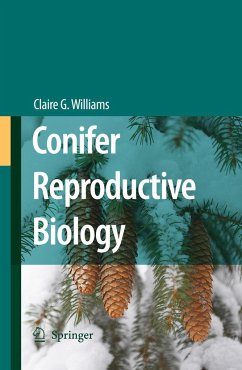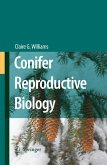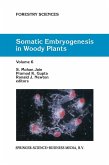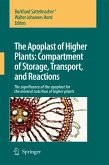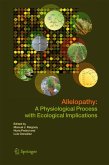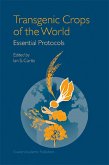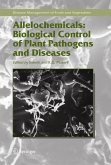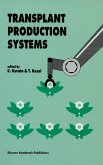This volume on conifer reproductive biology is intended as a text supplement for plant biology courses. It is timely because knowledge of model flowering plants is expanding so fast that each new plant biology text has less written on conifers than the last.
When it comes to reproduction, gymnosperms are deeply weird. Cycads and co- fers have drawn out reproduction: at least 13 genera take over a year from polli- tion to fertilization. Since they don't apparently have any selection mechanism by which to discriminate among pollen tubes prior to fertilization, it is natural to w- der why such a delay in reproduction is necessary. Claire Williams' book celebrates such oddities of conifer reproduction. She has written a book that turns the context of many of these reproductive quirks into deeper questions concerning evolution. The origins of some of these questions can be traced back Wilhelm Hofmeister's 1851 book, which detailed the revolutionary idea of alternation of generations. This alternation between diploid and haploid generations was eventually to become one of the key unifying ideas in plant evolution. Dr. Williams points out that alter- tion of generations in conifers shows strong divergence in the evolution of male and femalegametes, as well as in the synchronicity of male and female gamete development. How are these coordinated to achieve fertilization? Books on conifer reproduction are all too rare. The only major work in the last generation was Hardev Singh's 1978 Embryology of Gymnosperms, a book that summarized the previous century's work. Being a book primarily about embry- ogy, it stopped short of putting conifer reproduction in a genetic or evolutionary context.
When it comes to reproduction, gymnosperms are deeply weird. Cycads and co- fers have drawn out reproduction: at least 13 genera take over a year from polli- tion to fertilization. Since they don't apparently have any selection mechanism by which to discriminate among pollen tubes prior to fertilization, it is natural to w- der why such a delay in reproduction is necessary. Claire Williams' book celebrates such oddities of conifer reproduction. She has written a book that turns the context of many of these reproductive quirks into deeper questions concerning evolution. The origins of some of these questions can be traced back Wilhelm Hofmeister's 1851 book, which detailed the revolutionary idea of alternation of generations. This alternation between diploid and haploid generations was eventually to become one of the key unifying ideas in plant evolution. Dr. Williams points out that alter- tion of generations in conifers shows strong divergence in the evolution of male and femalegametes, as well as in the synchronicity of male and female gamete development. How are these coordinated to achieve fertilization? Books on conifer reproduction are all too rare. The only major work in the last generation was Hardev Singh's 1978 Embryology of Gymnosperms, a book that summarized the previous century's work. Being a book primarily about embry- ogy, it stopped short of putting conifer reproduction in a genetic or evolutionary context.
From the reviews: "The chapters that reflect the author's expertise are masterly and I learned much from them. Bringing together this information could not have been done by anybody else." (Professor Philip Barry Tomlinson, Harvard Forest, Harvard University and National Tropical Botanical Garden, Kalaheo, HI, USA) "Conifer Reproductive Biology is a masterful compendium of the literature and a thoughtful diagnosis of what we know (and do not know) about how these fascinating, diverse, and ancient plants reproduce. I recommend it to any and all interested in plant life." (Karl J. Niklas, The Liberty Hyde Bailey Professor of Plant Biology, Dept. of Plant Biology, Cornell University, Ithaca, NY, USA) "In recent years there have been big advances in the reproductive biology of conifers, but fresh textbook coverage has been minimal. This has now been made good in an excellent, attractively presented book. ... this book will be very valuable for a broad readership that includes evolutionary biologists, botanists, ecologists, conservationists, forest geneticists, tree breeders and seed-orchard managers. ... each chapter begins with a Summary and ends with a Closing section, and there is a separate Concluding section. References are listed separately for each chapter." (Rowland D. Burdon, New Zealand Journal of Forestry Science, Vol. 39, 2009) "This nice little book provides a comprehensive and detailed view over the reproduction Biology of Gymnosperms with detailed descriptions of the evolution of reproductive structures from fossil records, a clear overview of the life cycle of these rather weird plants, and many other features of the reproduction of these trees. ... The book will be of high use for biology and forestry post-graduate students, for forest scientists and geneticists, as well as for forest managers ... . this book will be of very high value." (Erwin Dreyer, Annals of Forest Science, Issue 4, 2010) "Williams, a forestry and conifer specialist, has compiled a state-of-the art work that details the reproductive systems of coniferous plants. ... writes at a very technical level and provides numerous literature references. ... The work will also have a ... appreciative audience of botanists working in fields such as forestry, genetics, and evolution who are interested in the reproductive systems of conifers. ... Summing Up: Recommended. Upper-division undergraduates, graduate students, researchers/faculty, and practitioners." (G. D. Drever, Choice, Vol. 47 (5), January, 2010) "This slim and well-presented book is intended to be a text ... for plant biology courses ... . it also has a number of other interesting features. The logic of the presentation is good. ... this book provides a good summary of conifer reproductive biology, especially for Pinus. ... Conifer specialists will find useful information here ... ." (Robert Hill, Annals of Botany, Vol. 105 (6), June, 2010) "This book has nine chapters separated into three sections. At the end of the book are the conclusion, glossary and subject index. References are provided for each chapter, as well as in the conclusion. ... According to the author, this book is intended as a 'text supplement' for plant biology courses. ... This book benefits from the authors extensive research experience on Pinus taeda, particularly in areas such as seed dispersal, breeding and embryo-lethality." (Danilo D. Fernando, International Forestry Review, Vol. 11 (4), 2009) "The depth of coverage goes well beyond what is needed ... in such a course progressing logically in seven chapters ... . Coverage of these topics is thorough and up to date, with the author being an important contributor to the field so the book is recommended for its stated purpose. ... it will be useful in some measure to anyone interested in plant reproduction." (James E. Eckenwalder, The Quarterly Review of Biology, Vol. 86 (1), March, 2011)

